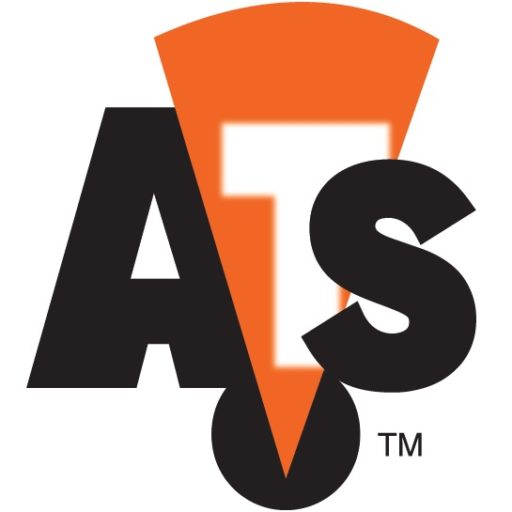Hey Everybody, Bob Craft here, for Advanced Technology Solutions.
We engineers sure do love curves. Now get your minds out of the gutter, this is strictly a professional discussion!
For many of us our love affair with curves started in 9th-grade drafting class when we were first introduced to the French Curve. For you millennials, or younger, out there drafting – or mechanical drawing – is what we did before computer-aided design software was invented! Had to do it all by hand on paper using drawing tools like these.
Our appreciation for curves only got stronger when we progressed to Algebra 2 and were plotting graphs that weren’t entirely linear and the curves had to be nice and smooth and neat or we lost points on our homework assignments. And it only intensified in college with steam curves, pump curves and compression curves, to name just a few. And who doesn’t love a set of curves like this?! I’d like to see ya draw them by hand without a set of these!
Lately, my personal favorite has been the P-to-F Curve or P-F curve for short. Did some research and the earliest published example I could find is in John Moubray’s book, Reliability Centered Maintenance. My personal copy is a second edition printed in 1997 and is still available today through your favorite bookseller if you’re interested.
The original P-F curve is a graphic representation of what happens when the functional health of a machine is challenged once irreversible damage has started.
Let’s review it………..
- The P-F curve is developed with time on the X-axis and functional health on the Y.
- It starts with the premise is that a machine is in good functional health until something bad happens, and physical damage starts that won’t correct on its own.
- Once the damage starts, functional health deteriorates and if left unaddressed, leads to a functional failure.
I show the point of functional failure as a poofy little gray cloud, but that doesn’t necessarily mean that things have gone catastrophic, with bits of metal flying around the room, although it could happen this way. It just means that the machine or system is no longer able to perform its intended function:
- On Demand,
- At Capacity or
- Within quality standards.
I talked about this in more detail in a previous Vidtorial.
Somewhere along this decline, a Point, that Moubray called “P” exists when the damage that will cause the impending functional failure can be recognized by some objective measurement or observation. He called this the point where the “Potential for Failure” exists, because we can recognize that something is going wrong, although I’m not really fond of that description for Point P. I prefer to think of Point P as being where along the curve the already started AND progressing damage can be Perceived. It’s when the damage manifests itself to us by becoming detectable. Think of Point P as the Point of Perception.
This concept has been used for years, based on estimates from the time between initial detection to functional failure, to determine the optimum repetition interval required for collecting condition monitoring data or making objective observations, with the goal to hopefully enable us to recognize that damage has started well enough in advance to properly plan and schedule the corrective action.
Obviously, we do not want to be surprised when a machine fails right in the middle of a production run! Some surprises are good, but not a surprise like that!
The other thing that we need to remember is that machines all have multiple failure mechanisms that once the damage starts, progress at different rates, show themselves to us at different times along the degradation curve, and require different technologies to detect in a timely enough manner to be able to plan and schedule corrective action.
Rather than focus on any specific technology, I’ve identified them here generically as A, B & C because different technologies see different problems, and those that see many see some sooner than others.
I think I was the first person to colorize the P-F Curve, back in 2009. Somebody could have beat me to it, but I never saw it in color until well after I started presenting it this way back then!
The thing that Moubray didn’t address is how a machine gets to the “irreversible damage point” in the first place. When you think about it, predicting failure once damage has been discovered isn’t really rocket science because given the fact that damage has started, predicting that the machine will fail is almost like predicting that the sun will rise. It’s really only a question of when the failure will happen
But what happens before the irreversible damage actually starts?
Somewhere before starts, there is a transition, from “everything is good” to some root cause failure mechanism in play that if corrected, can either delay or stop the damage from starting.
This area, to the left of the actual damage point, that I show as the green-to-yellow transition zone, also has a Point P where objective measurements and observations can enable us to Perceive the fact that a root cause failure mechanism is in play.
The key is recognizing when root cause failure mechanisms are in play, that if not corrected, will lead to the damage that ultimately leads to failure. This is why we should be thinking in terms of looking for root cause failure mechanisms in play, and not just damage that has already started.
The good news is, that since the P-F Curve was first published, over 25 years ago, condition monitoring technology has improved significantly. Many of the common technologies that we use, support recognizing when certain Root Cause Failure Mechanisms are active BEFORE the physical damage starts so that they can be addressed, thus preventing the damage and the subsequent degradation in functional health.
I know I started this Vidtorial by calling P-F Curve my favorite curve. I think, like condition monitoring technology has morphed for the better over time, it’s time to update the curve we think about too, by adding the left side and start calling the whole thing the FUNCTIONAL HEALTH CURVE.
Note that I’m keeping the original “Point P” nomenclature because it is familiar, but really prefer the Point P’s to be thought of as the Points of Perception whose specific locations are a function of the specific failure mechanism or damage AND the technology (or technologies) used to discover them.
We need to get ourselves and our industry away from the “predictive maintenance” notion of just looking for and finding damage, and move into the realm of finding root cause failure mechanisms in play, before the irreversible damage even has a chance to get started.
This is why ATS is a multi-technology condition monitoring and evaluation service provider. Our experienced machinery condition monitoring professionals use the right technologies to cover multiple machine failure modes that can help identify both when damage has already happened and when root cause failure mechanisms are in play within your machinery so that you can take the appropriate actions.
Why do we do this and why should you care?
The answer should be obvious but I’ll say it anyway.
It’s all about the cost consequences of lost productivity and how best to avoid it. In nearly all cases, it costs a lot less, in terms of both lost productivity and the resources required for correction, to address root cause failure mechanisms early on the functional health curve, than it does to wait until the real damage has gotten started.
A step change in cost consequences happens when the damage actually starts – whether you know about it or not. And it only gets more expensive as the damage progresses to the point of functional failure.
That’s it for today!
Stay safe out there, and please, make sure that when you go home at the end of your shift, you get there with all your body parts intact.
Bye for now.






0 Comments